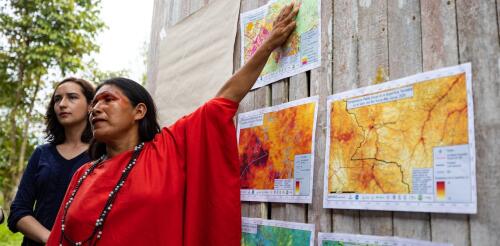Natural resources
Director Martin Scorsese’s new movie, “Killers of the Flower Moon,” tells the true story of a string of murders on the Osage Nation’s land in Oklahoma in the 1920s. Based on David Grann’s meticulously researched 2017 book, the movie delves into racial and family dynamics that rocked Oklahoma to the core when oil was discovered on Osage lands. White settlers targeted members of the Osage Nation to steal their land and the riches beneath it. But from a historical perspective, this crime is just the tip of the iceberg. From the early 1800s through the 1930s, official U.S. policy displaced thousands of Native Americans from their ancestral homes through the policy known as Indian removal. And throughout the 20th century, the federal government collected billions of dollars from sales or leases of natural resources like timber, oil and gas on Indian lands, which it was supposed to disburse to the land’s owners. But it failed to account for these t...
Leer en español ou em português The Ashéninka woman with the painted face radiated a calm, patient confidence as she stood on the sandy banks of the Amonia River and faced the loggers threatening her Amazonian community. The loggers had bulldozed a trail over the mahogany and cedar saplings she had planted, and blocked the creeks her community relied on for drinking water and fish. Now, the outsiders wanted to widen the trail into a road to access the towering rainforests that unite the Peruvian and Brazilian border along the Juruá River. María Elena Paredes, as head of the Sawawo Hito 40 monitoring committee, said no, and her community stood by her. She knew she represented not just her community and the other Peruvian Indigenous communities, but also her Brazilian cousins downstream who also rely on these forests, waters and fish. Roads beget more roads. The Interoceanic Highway, shown here, allowed logge...

